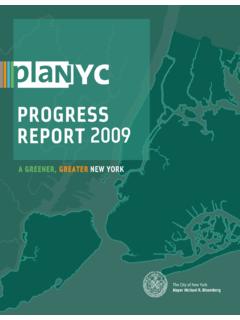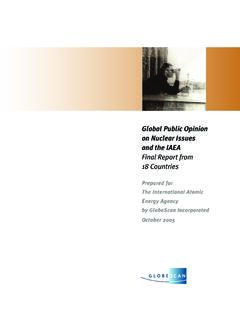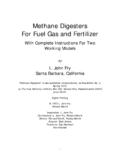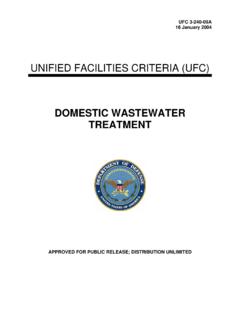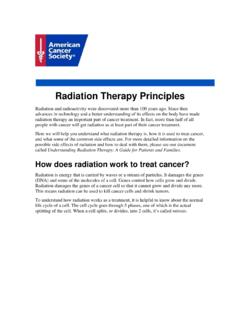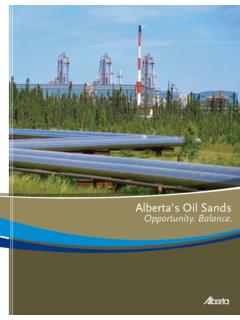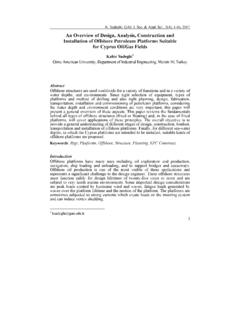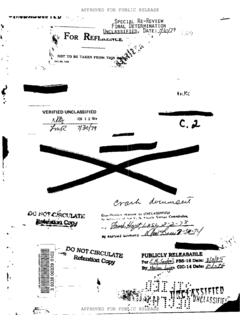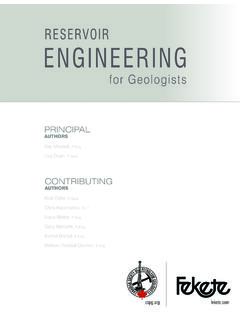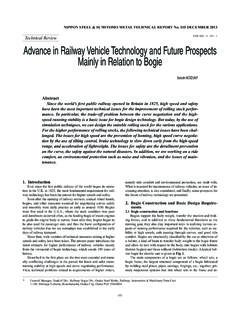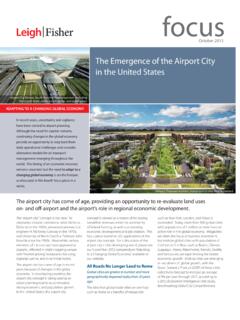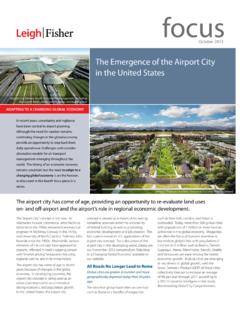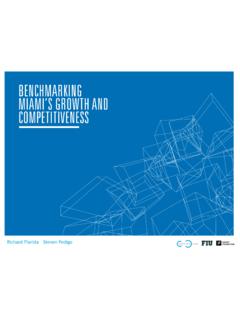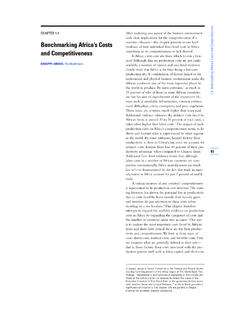Transcription of Waste Management Benchmarking Study 2006
1 Waste Management Benchmarking Study A Baseline Assessment June 2006 Executive Summary Introduction Ireland s increasing Waste costs were highlighted in the National Council Competitiveness (NCC) Statement on Prices and Costs in September 2004. Cumulative increases between 2000 and 2004 varied from just nine percent in Kildare to 380 percent in Cork. This has serious implications for the competitiveness of businesses and for the attraction of foreign direct investment (FDI) and companies choice of location. In addition, IBEC s business costs survey (2004) found that Waste collection/treatment ranked third in terms of businesses top priorities. Earlier Forf s reports, Key Waste Management Issues in Ireland (2001) and Key Waste Management Issues in Ireland - Update Report (2003), highlighted the growing concerns from industry over the lack of adequate Waste infrastructure available in the country to cope with the demands from industrial, commercial and household production.
2 Progress in addressing these infrastructure deficits has been limited with infrastructure improvements mainly in the area of light infrastructure (recycling and segregation). In its January 2005 submission on the NDP, Engineers Ireland highlighted Waste Management as the area of the NDP where least progress had been made. The investment target for Waste Management infrastructure in the NDP was 825 million, including 571 million of private investment. However, combined government and private investment to the end of 2005 was of the order of 250 million. Objectives of Study In August 2005, Forf s commissioned RPS Consulting Engineers to undertake a Benchmarking analysis of the Irish Waste Management sector.
3 The Study had two core objectives: To determine and analyse the gaps between Ireland and competitor countries in meeting the needs of industry across a number of key issues such as cost, capacity, and ownership; and To review and analyse policies/initiatives in a number of comparable countries in order to inform the identification of actions needed to improve Ireland s competitiveness in meeting the Waste Management requirements of the enterprise base. RPS, in consultation with Forf s and the Steering Group, drew up a list of countries to benchmark Ireland against: Austria, Czech Republic, Denmark, Netherlands, New Zealand, Scotland, Singapore and Sweden. Two regions were also included, namely Flanders and Massachusetts.
4 These countries/regions were selected in order to represent a variety of market sizes with different Waste Management policies and practices as well as markets with similar Waste generation patterns. 2 Waste Management Benchmarking Study |June 2006 Data on Waste is often of variable quality and tends to be updated on a three or five year cycle. This has lead to a dearth of up to date, comparable international data in the Waste Management area. As a result, one of the major challenges of this Benchmarking exercise was to develop robust indicators which would provide a backdrop against which to complete a more detailed analysis of Ireland s comparative Waste Management performance. Key Findings The Benchmarking analysis confirmed that Ireland performs poorly relative to a selection of competitor countries in meeting the Waste Management needs of enterprise.
5 The key findings of the Benchmarking analysis are summarised below: Waste Generation: Ireland has the highest municipal Waste generation per capita of the benchmark countries and manufacturing Waste generation per employee is also relatively high. Waste Treatment: Ireland has made much progress in the area of municipal Waste Management in recent years. The share being recycled has increased considerably from 13 percent in 2001 to 33 percent in 2004. The national target for municipal Waste recycling is 35 percent by 2013. Ireland performs poorly relative to the benchmark countries with a recovery rate of 35 percent for industrial Waste , highlighting Ireland s dependence on landfill as a Waste Management solution.
6 A significant amount of the industrial Waste is land-filled on-site by the bigger companies rather than being land-filled in municipal landfills. Waste Costs: Of the 11 countries benchmarked, Ireland has the highest Waste Management costs for non-hazardous landfill and biological Waste treatment. Recycling costs and hazardous Waste treatment costs are also higher than most competitor countries because of Ireland s reliance on export markets for the treatment of recyclable materials. Ireland has only one glass, one paper and one plastic reprocessing facility in operation. The vast majority of Ireland s recyclable materials are exported for further treatment. The additional transport costs estimated at between 25 to 50 per tonne depending on the material - are directly impacting the Waste costs for the enterprise sector.
7 Waste Capacity: Shortfalls in capacity have been identified for both municipal Waste and hazardous Waste Ireland exports 30 percent of municipal Waste and 70 percent of hazardous Waste . The EU Landfill Directive requires reductions in the amount of biodegradable municipal Waste being land-filled. This effectively requires the replacement of landfill capacity with infrastructure of a different kind. Many of Ireland s competitors have already put in place such infrastructure and will have a competitive edge in this regard until such time as the Waste treatment capacity required in Ireland is delivered. Ownership of Waste Collection: Ireland is almost unique among the benchmark countries in having private services directly involved in the collection of Waste without any municipal involvement in establishing the contract and determining what happens to the Waste .
8 Waste Management Benchmarking Study | June 2006 3 Overview of Ireland s Waste Management Performance Ireland s approach to Waste Management is based on the internationally adopted hierarchy of options that has been embraced by the European Union since 1989 as the cornerstone of its Waste Management policy. The Waste Management hierarchy states that the most preferred option is prevention and minimisation, followed by re-use and recycling, energy recovery and, least favoured of all, disposal. The table below summarises Ireland s performance across the Waste hierarchy for each of the three Waste streams examined in this Benchmarking study1. Minimisation/ Prevention Recycling/ Reuse Energy Recovery Disposal (Landfill) Municipal (household + commercial) Highest per capita Waste but growth in per capita Waste lower than GDP growth Improving but still lags leading benchmark countries No thermal treatment facilities Very high dependence on disposal Highest landfill cost Industrial Relatively high per capita Waste Waste volumes only increased by between 2001 and 2004 Rate of recovery (recycling/reuse + energy recovery)
9 Is improving but still low relative to the benchmark countries No thermal treatment facilities Very high dependence on disposal Highest landfill cost Hazardous Heavy reliance on exports 70% of hazardous Waste is exported Policy Priorities The Benchmarking analysis has highlighted a range of areas where Ireland performs poorly compared to the other selected countries in meeting the Waste Management needs of the enterprise base. The policy priorities from an enterprise perspective are set out below: Waste Prevention and Minimisation Ireland has the highest level of municipal Waste generation per capita of all the benchmark countries and manufacturing Waste generation per employee is also relatively high.
10 Waste Management and the associated costs continue to be a key issue for enterprise in Ireland. By not generating Waste , we can eliminate the need to handle, transport, treat and dispose of Waste . We can also avoid having to pay for Waste Management services. Therefore, investing resources in Waste prevention and minimisation offers potential long-term benefits for the competitiveness of enterprises of all types. The main objectives of Ireland s National Waste Prevention Programme 2004-2008, which was launched in 2004, are to reverse current trends in Waste production, decouple Waste generation from economic growth and minimise the environmental impact of Waste . Sustained 1 There are seven priority Waste streams.
